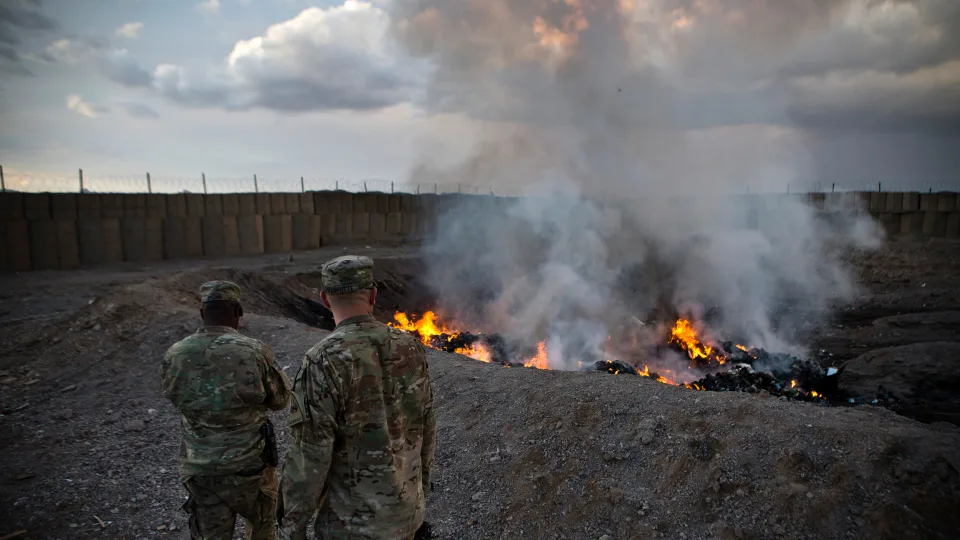Toxic smoke from US military burn pits at bases in Iraq following the 2003 invasion and occupation of the country has caused deadly cancers and respiratory problems in both US soldiers and Iraqis, the Washington Post reported on 18 March.
“Where soldiers established military bases, they burned their trash in the open, poisoning the air all around them,” the Post wrote. Batteries, human waste, plastic ration packs, medical waste, paint, petroleum, unexploded ordinance and even refrigerators were among the items burned.
Of the 150 burn pits at US military bases throughout Iraq, the pit in the town of Balad, 50 km north of Baghdad, was the largest, some 10 acres in size.
By 2008, some 150 tons of waste were burned there each day, at times creating a poison cloud thick enough to block out the sun, which caused farmers working the fields nearby to return home covered in soot streaks at the end of each day.
US President Joe Biden signed legislation last year acknowledging the deadly impact of the burn pits and providing benefits to US military veterans affected by the toxic smoke. President Biden was motivated in part by the death of his own son, Beau, who died of brain cancer believed to have been caused by exposure to the burn pits during his tour as a soldier in Iraq.
However, the US government has not attempted to assess the impact of the pits on Iraqis or provide them with any form of compensation. While US soldiers would be exposed to the toxic gases over the course of a one-year deployment to the country, Iraqis living and working near US bases breathed the smoke day and night for eight years as the war dragged on.
The Washington Post documented the story of one family working a farm near Balad. The entire family had health issues, except one brother, who worked as a policeman deployed outside the town. The mother, Attiyah, developed cancer three times, ovarian, thyroid, then ovarian cancer again. Her grandson, Mehdi, died of respiratory issues that caused his oxygen levels to drop too low. When he was first taken to the hospital, his skin was blue.
But the rise in rates of cancer and other illnesses among Iraqis has been suspected for years, not only due to the burn pits but also due to the US military’s use of radioactive materials in munitions, in particular Depleted Uranium (DU), during the first Gulf War in 1991 and Second Gulf War in 2003.
In 2013, Al-Jazeera reported that contamination from DU munitions and other military-related pollution was suspected of causing a sharp rise in the cases of congenital birth defects and cancer, such as leukemia, throughout many Iraqi governorates, most notably in the city of Falluja.
Al-Jazeera explained that “Official Iraqi government statistics show that, prior to the outbreak of the First Gulf War in 1991, the rate of cancer cases in Iraq was 40 out of 100,000 people. By 1995, it had increased to 800 out of 100,000 people, and, by 2005, it had doubled to at least 1,600 out of 100,000 people.”
The 2003 US invasion of Iraq was launched after Bush administration officials fabricated evidence claiming Iraq’s government, led by Saddam Hussein, possessed weapons of mass destruction and had assisted Al-Qaeda in carrying out the 9/11 attacks. These false claims were needed to gain the approval of the US public to launch the war.
According to researchers at Brown University, between 275,000 and 306,000 Iraqi civilians are estimated to have been killed by direct violence following the US invasion. However, the actual number of civilians killed by direct and indirect war violence is unknown but likely much higher.
No members of the Bush administration have been prosecuted in domestic or international courts for their roles in launching the illegal 2003 war.
Source : TheCradle






























